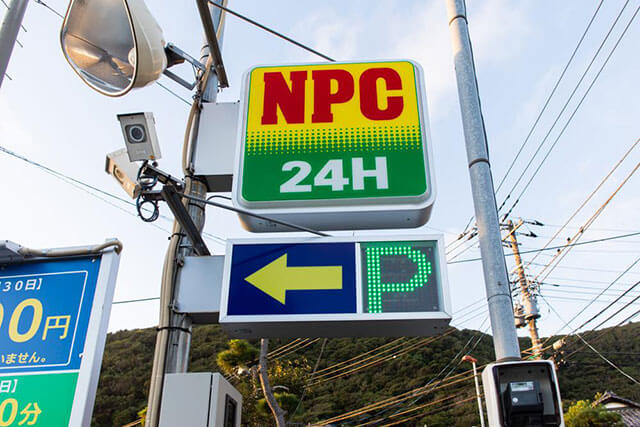
Just like driving in Japan (and countless other aspects of daily life), parking your car is fairly straightforward but involves some rules and practices that range from esoteric to common sense. Clear signage usually makes it easy enough to figure out where and when to park your vehicle, but here are five simple tips (and one bonus) to keep in mind.
-
01
Signs, signs, everywhere a sign
In Japan, parking a car never involves guess work: there will be a sign! If you can find a spot to park on the street, it will be clearly marked, and often include the acceptable times to park. Signs for parking garages and lots are marked by the easily-recognized circled P. Parking times and prices will be marked, as well as an indicator whether the lot is full or has spaces available (watch for this kanji: 空, meaning empty). The signs on parking lots, garages, and noting on-street parking can take a moment to decipher, but they’re easier to deal with than the parking tickets doled out by the bicycle-riding meter men that cruise the city.
-
02
Keep an eye on the time
![Keep an eye on the time]()
Keep an eye on the time
Prices usually vary depending on the day of the week and the time you’re parking. Most lots, especially in city centers, will charge a higher fee during daytime hours when most people are hunting for spots, dropping rates much lower price during the off-peak hours and overnight. Also listed on lot and garage signs is the maximum rate per day. The maximum rate will usually differ, between Monday to Friday and Sunday and holidays.
-
03
Find a spot
![Find a spot]()
Find a spot
The most common lots in Japan are microscopic by Western standards, usually an opportunity for urban landlords to generate steady income from a vacant lot. The majority are less than a dozen spaces, each one fitted with an automatic guard. After parking in the space, the guard will slide up to lock the car in place (you’ve got a few minutes to reconsider the location, the guard is not automatic).
-
04
Plug the meter
![Plug the meter]()
Plug the meter
In parking garages, things operate about as they do anywhere else: take a ticket as you enter and stick it into a kiosk or pay a gate attendant when you’re ready to leave. Dealing with the kiosks at the omnipresent mini-lots is quite simple as well. At the machine, enter your space number, confirm the time being charged, and pay (cash, credit card, and IC card are the usual options). Wait for the guard to be lowered and cruise out.
-
05
Look for a deal
![Look for a deal]()
Look for a deal
The idea of expansive parking lots attached to every business is a concept that, fortunately, hasn’t spread to Japan. Outside of small towns and commuter suburbs, where everyone cruises around by car, paid parking is sometimes the only option. There are exceptions, though, which can help you to save a bundle. Parking in a big city neighborhood can cost an arm and a leg, but certain businesses and buildings will offer free parking to customers and guests.
-
06
Bonus: back it in
![Bonus: back it in]()
Bonus: back it in
There are a number of reasons that local drivers will give when asked why everyone backs into parking spaces. Whether it really is safer and more convenient is something worth considering, perhaps, but it’s an unwritten rule to reverse into spots. It’s simply the way things are done. Especially when maneuvering into a space in a public pay lot, do it in reverse.
The Tokyo Station Hotel
1-9-1 Marunouchi, Chiyoda-ku Tokyo

-






 Go here
Go here










